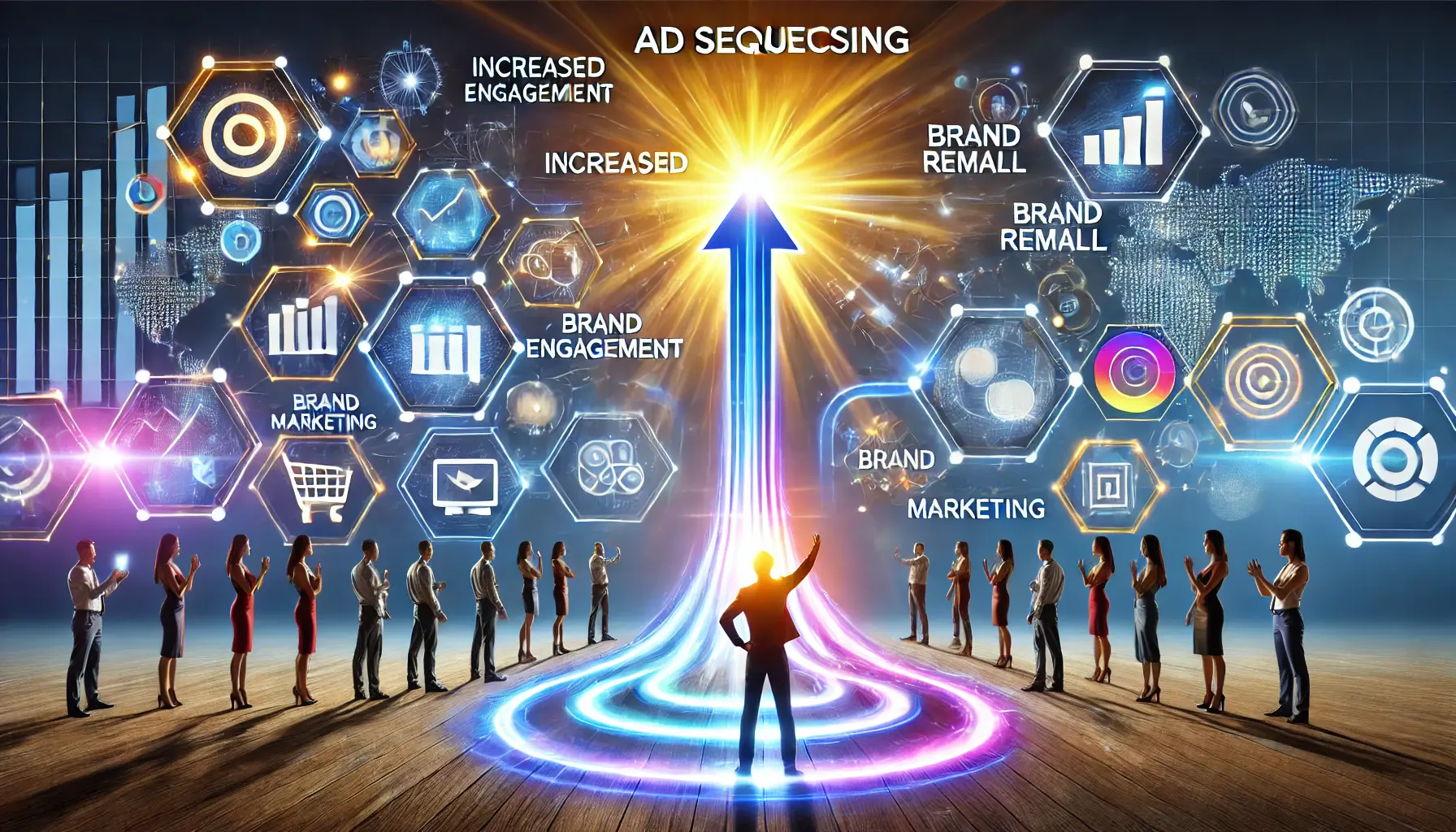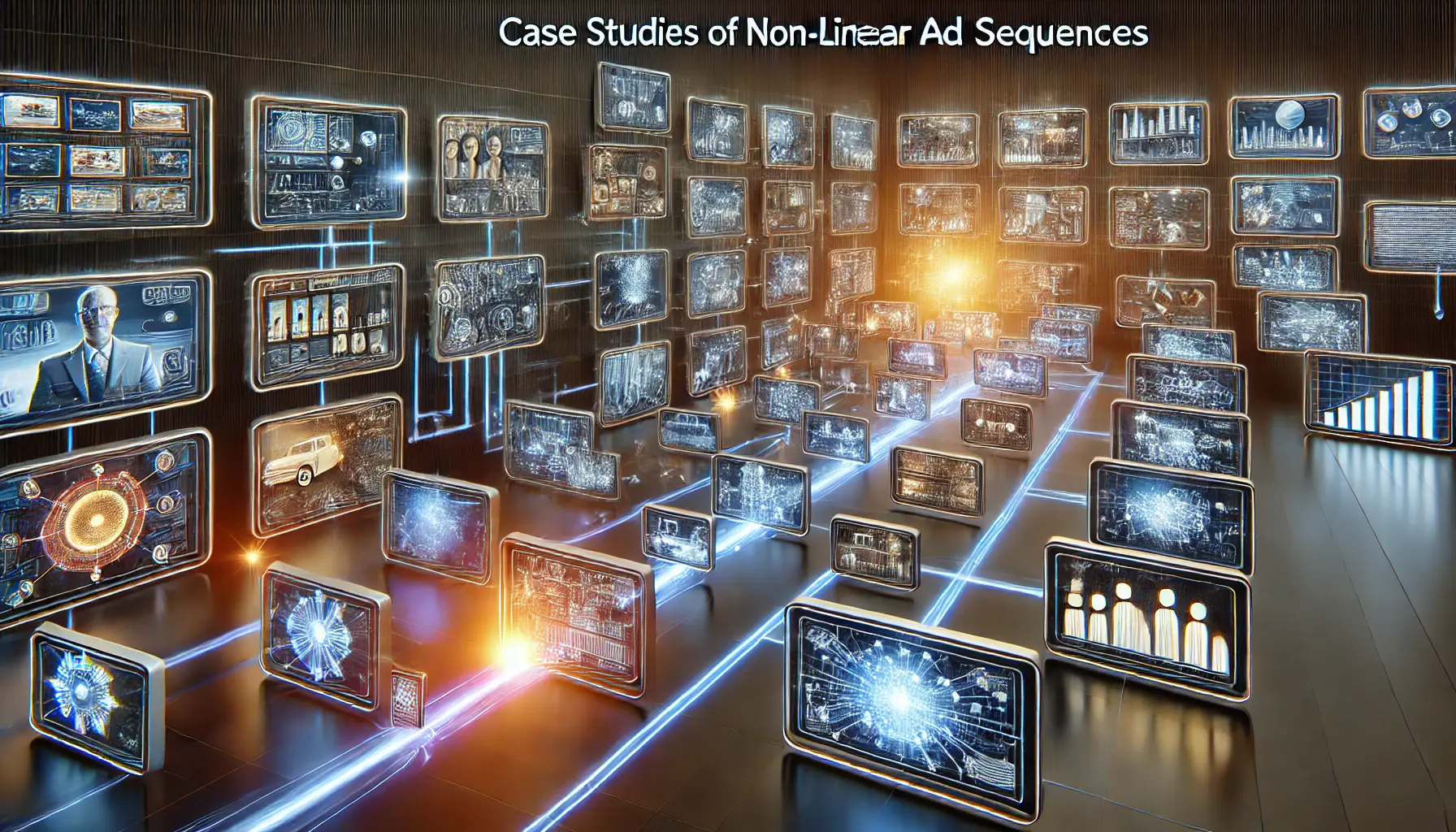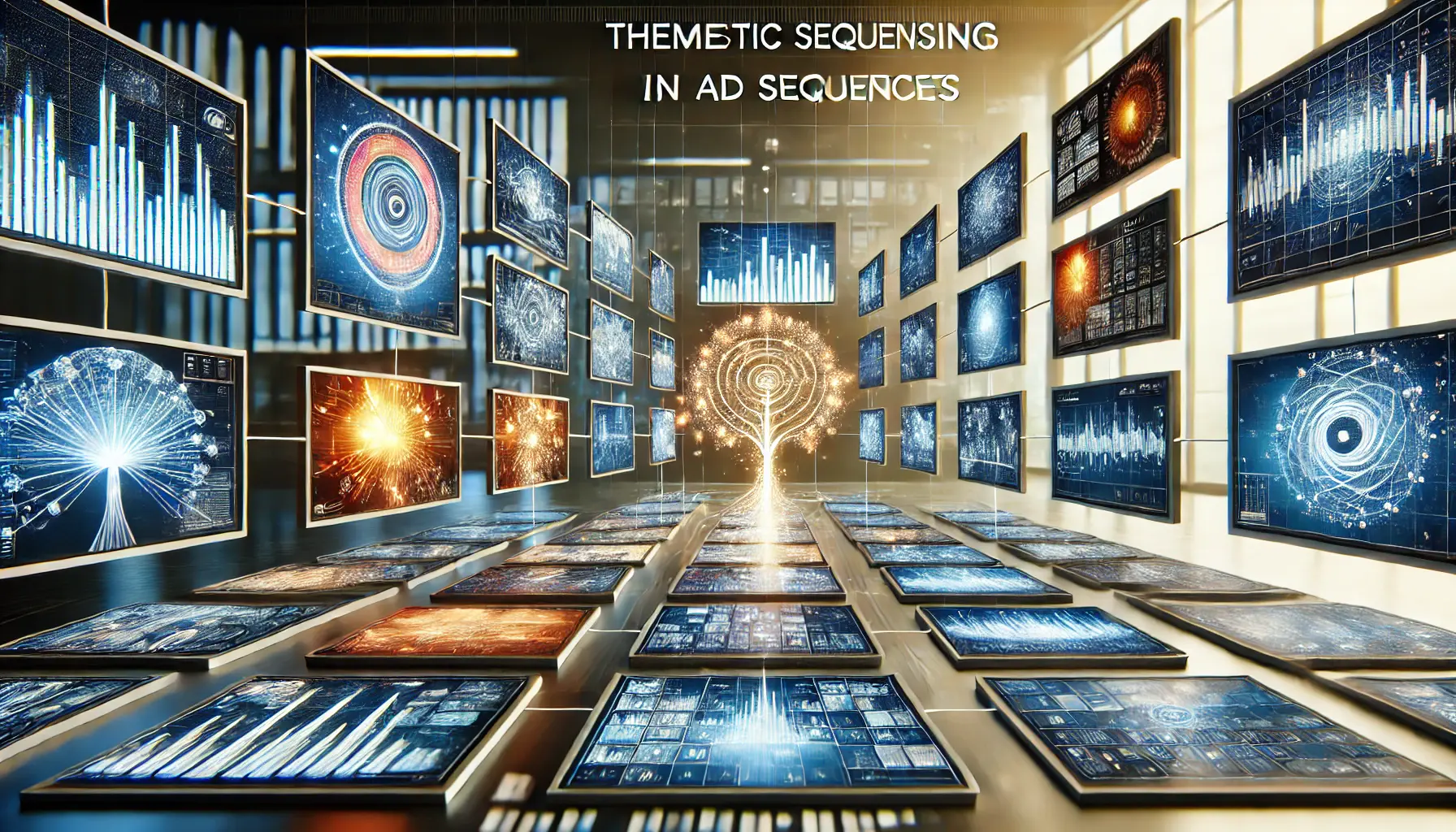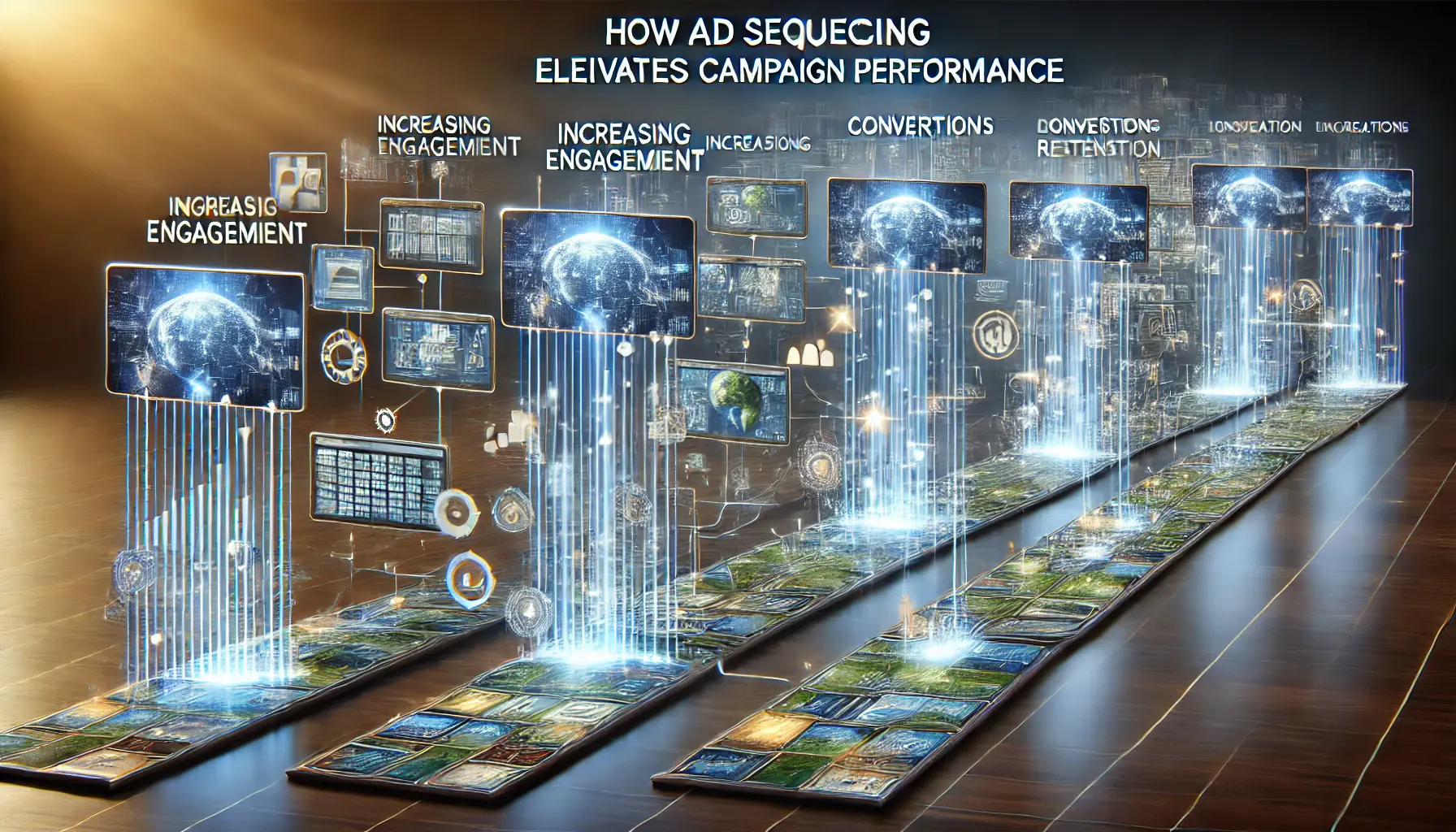In the world of digital marketing, capturing your audience’s attention is more challenging than ever.
With so many ads competing for a viewer’s time, how do you make sure your message is heard loud and clear?
The answer lies in ad sequencingA digital marketing strategy where ads are delivered in a specific order to guide viewers through a narrative..
This innovative strategy allows marketers to craft a cohesive narrative across multiple ads, creating a memorable and impactful experience for the audience.
Mastering ad sequencing can drive deeper engagement and foster better connections with your target audience.
In this article, we’ll explore four highly effective ad sequencing methods specifically designed for YouTube narratives.
Whether you’re new to this concept or looking to refine your strategy, you’ll find actionable insights to elevate your campaigns.
Let’s begin by understanding the fundamentals of ad sequencing and why it’s a game-changer for marketers.
- Understanding Ad Sequencing in YouTube Campaigns
- Method 1: Linear Storytelling in Ad Sequences
- Method 2: Non-Linear Storytelling Techniques
- Method 3: Thematic Sequencing Strategies
- Method 4: Interactive Sequencing Techniques
- Bringing It All Together: The Power of Ad Sequencing
- Frequently Asked Questions About Ad Sequencing
Understanding Ad Sequencing in YouTube Campaigns
Ad sequencing is more than just running a series of ads; it’s about creating a story that unfolds over time, keeping viewers engaged and eager for more.
This approach leverages the power of storytelling to deliver a series of interconnected messages that resonate with your audience.
Unlike standalone ads, ad sequences are designed to build anticipation, evoke emotions, and ultimately drive action.

Visual representation of ad sequencing as a strategic tool in digital marketing.
What is Ad Sequencing?
At its core, ad sequencing is a method of delivering ads in a specific order to guide viewers through a narrative journey.
Each ad in the sequence serves a distinct purpose, whether it’s to introduce a concept, build interest, or encourage action.
This strategic approach ensures that your audience receives a coherent and impactful message over time.

Illustration highlighting the key benefits of ad sequencing for marketers.
Benefits of Ad Sequencing for Marketers
Why use ad sequencing in your YouTube campaigns?
Here are some compelling reasons:
- Stronger Engagement: The art of sequential storytelling keeps viewers hooked on your message.
- Better Brand Recall: Repeated exposure to a coherent narrative helps solidify your brand’s identity.
- Increased Conversion Rates: Guiding the audience through a well-planned journey can lead to a greater propensity for action.
- Customizable Experiences: Ad sequencing allows you to tailor content for different audience segments.

Illustration showcasing the impact of ad sequencing on viewer engagement.
How Ad Sequencing Enhances Viewer Engagement
Ad sequencing leverages the psychology of storytelling to captivate viewers.
By creating a sense of progression, it encourages them to follow along and stay connected with your brand.
For instance, starting with an emotional introduction followed by informative content can effectively build trust and interest.
Additionally, ad sequencing can adapt to viewer behavior.
If a user skips an ad, the next ad in the sequence can adjust its message to re-engage them, ensuring no opportunity is wasted.
This dynamic approach maximizes the impact of your campaigns while delivering a seamless experience.
With a proper understanding of what ad sequencing is and its benefits, let’s dive into the specifics of how to apply this approach to your YouTube campaigns.
Ad sequencing transforms static ads into a dynamic storytelling experience, enabling marketers to captivate their audience and foster deeper connections.

Illustration depicting the linear storytelling method in ad sequences.
Method 1: Linear Storytelling in Ad Sequences
Linear storytelling is a straightforward yet powerful approach in ad sequencing.
It involves presenting a series of ads that follow a chronological order, each segment unveiling a part of the story.
This method guides viewers through a narrative journey, making it particularly effective for introducing new products or concepts.

Illustration depicting the process of crafting a chronological narrative for ad sequences.
Crafting a Chronological Narrative
A good linear narrative starts with an opening that hooks the audience.
Each subsequent ad must build on the previous one, adding depth to the story.
Consistency in tone, style, and messaging across all ads keeps the audience connected to the narrative throughout the sequence.
- Strong opening: Capture attention from the very beginning.
- Build upon each ad: Ensure each ad adds value to the overall story.
- Maintain consistency: Keep tone and style uniform across all ads.

Illustration of effective linear ad sequences demonstrating the step-by-step progression of a product story.
Examples of Effective Linear Ad Sequences
Brands have successfully utilized linear storytellingA narrative approach that follows a chronological sequence of events. to engage audiences.
For instance, a company might launch a campaign where the first ad introduces a problem, the second showcases the solution, and the third highlights customer testimonials.
This progression keeps viewers engaged and reinforces the brand’s message.

Illustration depicting best practices for linear storytelling in ad sequences.
Best Practices for Linear Storytelling
When implementing linear storytelling in your ad sequencing strategy, consider the following best practices:
- Understand your audience: Tailor the narrative to resonate with your target demographic.
- Keep it concise: Ensure each ad is brief yet impactful to hold the viewer’s attention.
- Include a clear call-to-action: Guide viewers on what action they should take after the ad.
By following these best practices, you can craft a linear ad sequence that tells a riveting story and drives meaningful engagement with your audience.
Linear storytelling simplifies ad sequencing by presenting a structured narrative that progressively builds trust and interest with your audience.

undefined
Method 2: Non-Linear Storytelling Techniques
Non-linear storytelling in ad sequencing breaks away from traditional chronological narratives.
This approach presents ads out of sequence, utilizing techniques like flashbacksA storytelling technique that depicts events from the past., flash-forwardsA storytelling technique that depicts future events within the narrative., or parallel plots.
Such methods can generate intrigue and maintain viewer engagement through unexpected twists and turns.

Illustration of creating flexible ad narratives with branching and dynamic paths.
Creating Flexible Ad Narratives
To craft a flexible ad narrative, consider the following steps:
- Identify Key Story Elements: Determine the central themes and messages you want to convey.
- Design Non-Chronological Segments: Develop ad segments that can stand alone yet contribute to the overarching narrative.
- Ensure Cohesion: While the sequence is non-linear, maintain a consistent brand message and tone across all ads.

Illustration of case studies using non-linear ad sequences, highlighting customer experiences and interconnected narrative elements.
Case Studies of Non-Linear Ad Sequences
Several brands have effectively employed non-linear storytellingA narrative approach that does not follow a chronological order, often using flashbacks or parallel plots. in their ad campaigns.
For instance, a company might release ads that depict different customer experiences with their product, each from a unique perspective.
Over time, these ads collectively build a comprehensive understanding of the product’s impact.

Illustration of tips for implementing non-linear storytelling in ad sequences.
Tips for Implementing Non-Linear Storytelling
When adopting non-linear storytelling in your ad sequencing strategy, consider the following tips:
- Keep it Clear: Each ad should be understandable on its own, in case it’s seen out of order.
- Pique Curiosity: Employ interesting elements that encourage viewers to seek out more content.
- Pay Attention to Audience Response: Note how viewers engage with each ad to adjust the sequence for maximum impact.
By implementing these techniques thoughtfully, you can create a non-linear ad sequence that is dynamic, engaging, and memorable for your audience while reinforcing your brand message.
Non-linear storytelling breaks conventional norms, creating intrigue through fragmented narratives like flashbacks or parallel plots.

Illustration of thematic sequencing strategies in ad sequences, emphasizing diverse yet cohesive storytelling.
Method 3: Thematic Sequencing Strategies
Thematic sequencing in ad sequencing revolves around a central theme or concept, rather than following a chronological or non-linear narrative.
This method involves creating a series of ads where each one explores a different aspect or dimension of the same theme, providing a cohesive and immersive experience for the audience.

Illustration of aligning ads with a central theme in digital marketing, showing a cohesive and consistent narrative.
Aligning Ads with Central Themes
To effectively align ads with a central theme, consider the following steps:
- Identify the Core Theme: Pin down the central idea or message that you want to drive across all ads.
- Develop Diverse Perspectives: Build individual ads, each highlighting one unique facet of the core theme.
- Ensure Consistent Branding: Use the same visual elements, tone, and messaging to reinforce the theme throughout the sequence.

Illustration of successful thematic ad sequences, highlighting a cohesive flow tied together by a central theme.
Successful Thematic Ad Sequence Examples
Brands have successfully employed thematic sequencingAn ad sequencing method centered around a single theme or concept. to create memorable campaigns.
For instance, a company might develop a series of ads, each focusing on a different benefit of their product, all tied together by the overarching theme of enhancing quality of life.
This approach allows the audience to see various applications of the product, reinforcing its value.

Illustration of guidelines for thematic sequencing in digital marketing, showcasing a structured layout of interconnected screens.
Guidelines for Thematic Sequencing
When implementing thematic sequencing in your ad sequencing strategy, consider the following guidelines:
- Maintain Audience Interest: Vary the content and presentation in each ad to keep the audience engaged.
- Reinforce the Central Theme: Ensure that each ad clearly connects back to the main theme to build a cohesive narrative.
- Monitor Campaign Performance: Analyze audience responses to each ad to refine and optimize the sequence for better engagement.
By adhering to these guidelines, you can create a thematic ad sequence that not only delivers a unified message but also resonates deeply with your audience, enhancing brand recall and engagement.
Thematic sequencing revolves around a unified theme, showcasing diverse perspectives to reinforce your brand’s core message.

Illustration of interactive sequencing techniques in digital marketing, emphasizing viewer decision-making and engagement.
Method 4: Interactive Sequencing Techniques
Interactive sequencing represents the cutting edge of ad sequencing methods, leveraging the interactive capabilities of digital platforms.
This approach involves creating a series of ads where the progression depends on the viewer’s actions or choices.
It’s a highly engaging method, as it involves the audience directly in the narrative and can lead to personalized ad experiences.

Illustration of designing interactive ad campaigns, emphasizing user engagement and dynamic ad elements.
Designing Interactive Ad Campaigns
To create an effective interactive ad campaign, consider the following steps:
- Develop Multiple Story Paths: Create various narrative branches that respond to different viewer choices.
- Incorporate Interactive Elements: Make use of features like clickable annotations or decision points to engage viewers.
- Ensure Seamless Transitions: Keep transitions between different ad segments smooth to maintain audience immersion.

Illustration of successful interactive ad sequences, emphasizing viewer participation and dynamic ad flow.
Examples of Successful Interactive Ad Sequences
Brands have effectively utilized interactive sequencingAn ad sequencing method that involves viewer interaction, allowing them to influence the narrative. to enhance engagement.
For instance, a company might create a campaign where viewers choose the storyline’s direction, leading to different product showcases based on their selections.
This personalized experience can significantly increase viewer interest and retention.

Illustration of best practices for implementing interactive sequencing in digital marketing, emphasizing user engagement and strategy.
Best Practices for Implementing Interactive Sequencing
When incorporating interactive sequencing into your ad sequencing strategy, consider the following best practices:
- Prioritize User Experience: Make sure interactive elements are intuitive and add to the viewing experience.
- Test Across Devices: Ensure interactive features work on a variety of devices and platforms.
- Analyze Engagement Data: Track how viewers engage with different paths to optimize future campaigns.
By thoughtfully implementing interactive sequencing techniques, you can create dynamic ad experiences that captivate your audience and foster deeper engagement with your brand.
Interactive sequencing empowers audiences by letting them shape the narrative, resulting in personalized and engaging ad experiences.

Illustration of the power of ad sequencing, with digital screens integrating into a cohesive and impactful narrative.
Bringing It All Together: The Power of Ad Sequencing
As we’ve explored, ad sequencing is a transformative strategy that empowers marketers to create compelling, cohesive, and highly engaging campaigns.
By strategically organizing and delivering ads, you can capture attention, build emotional connections, and drive your audience toward action.
Let’s recap the four effective methods covered in this article and how they can revolutionize your YouTube campaigns.

undefined
Key Takeaways from Ad Sequencing Methods
- Linear Storytelling: A classic approach that uses chronological narratives to guide viewers step-by-step through your story, building trust and interest incrementally.
- Non-Linear Storytelling: An innovative technique that breaks away from traditional timelines, using flashbacks and parallel plots to maintain intrigue and engagement.
- Thematic Sequencing: A method that centers on a unified theme, with each ad exploring different facets of the same concept, ensuring a cohesive yet diverse narrative.
- Interactive Sequencing: A cutting-edge approach that allows viewers to shape the narrative, creating personalized and highly engaging ad experiences.

Illustration of how ad sequencing improves campaign performance, with screens showing increasing engagement and conversions.
How Ad Sequencing Elevates Campaign Performance
When applied thoughtfully, these methods can significantly enhance your campaign performance.
Here’s how:
- Stronger Brand Recall: Repeated exposure to interconnected narratives reinforces your brand identity.
- Enhanced Viewer Engagement: Dynamic and personalized ad experiences keep your audience invested in your message.
- Increased Conversion Rates: Guiding viewers through a well-planned sequence builds trust and compels action.

Illustration of the final thoughts on implementing ad sequencing, emphasizing the integration of ad sequencing techniques into a cohesive strategy.
Final Thoughts on Implementing Ad Sequencing
To maximize ad sequencing, focus on your audience’s preferences and behaviors.
Leverage data to refine your strategies and experiment with different methods to find what resonates best.
Remember, the ultimate goal is to create a memorable journey that not only informs but also inspires your audience to act.
By combining creativity with strategy, you can unlock the full power of ad sequencing and elevate your YouTube campaigns to a new level of marketing success.
Strategically leveraging ad sequencing methods can revolutionize YouTube campaigns, combining creativity and data-driven insights for impactful results.

Illustration of frequently asked questions about ad sequencing, showing interconnected digital screens symbolizing key concepts.
Your campaigns can be managed by an agency specialized in Google Ads, check out our service page.
Frequently Asked Questions About Ad Sequencing
Ad sequencing is a powerful strategy in digital marketing, but it often raises questions.
Below are some common inquiries to help you understand its nuances.
Ad sequencing involves delivering a series of ads in a specific order to guide viewers through a narrative, enhancing engagement and reinforcing the brand message.
Unlike standalone ads, ad sequencing presents a cohesive story across multiple ads, creating a more engaging and memorable experience for the audience.
Ad sequencing can lead to stronger brand recall, increased viewer engagement, and higher conversion rates by providing a structured and compelling narrative.
Start by defining your campaign objectives, understanding your target audience, and crafting a series of ads that tell a cohesive and engaging story.
Platforms like YouTube and LinkedIn offer features that facilitate ad sequencing, allowing marketers to create structured ad narratives.
Monitor key performance indicatorsMetrics used to measure the success and effectiveness of a campaign. such as click-through rates, conversion rates, and audience engagement metrics to assess campaign effectiveness.
Yes, ad sequencing can be tailored to different audience segments, delivering personalized messages that resonate with specific viewer preferences.
Challenges include ensuring narrative coherence, maintaining audience interest throughout the sequence, and accurately measuring campaign performance.
By presenting a story that unfolds over multiple ads, ad sequencing keeps viewers interested and encourages them to follow the narrative to its conclusion.










